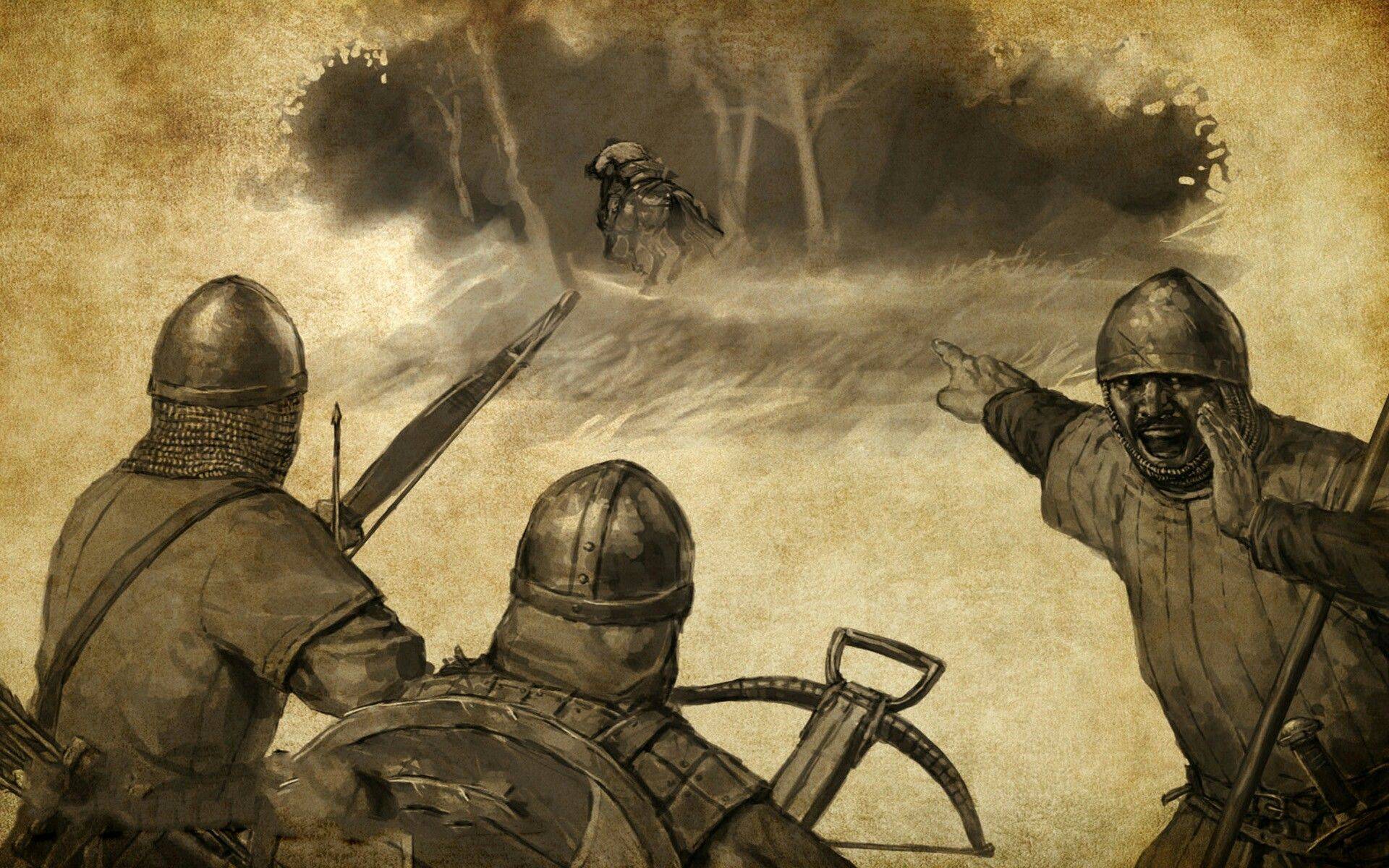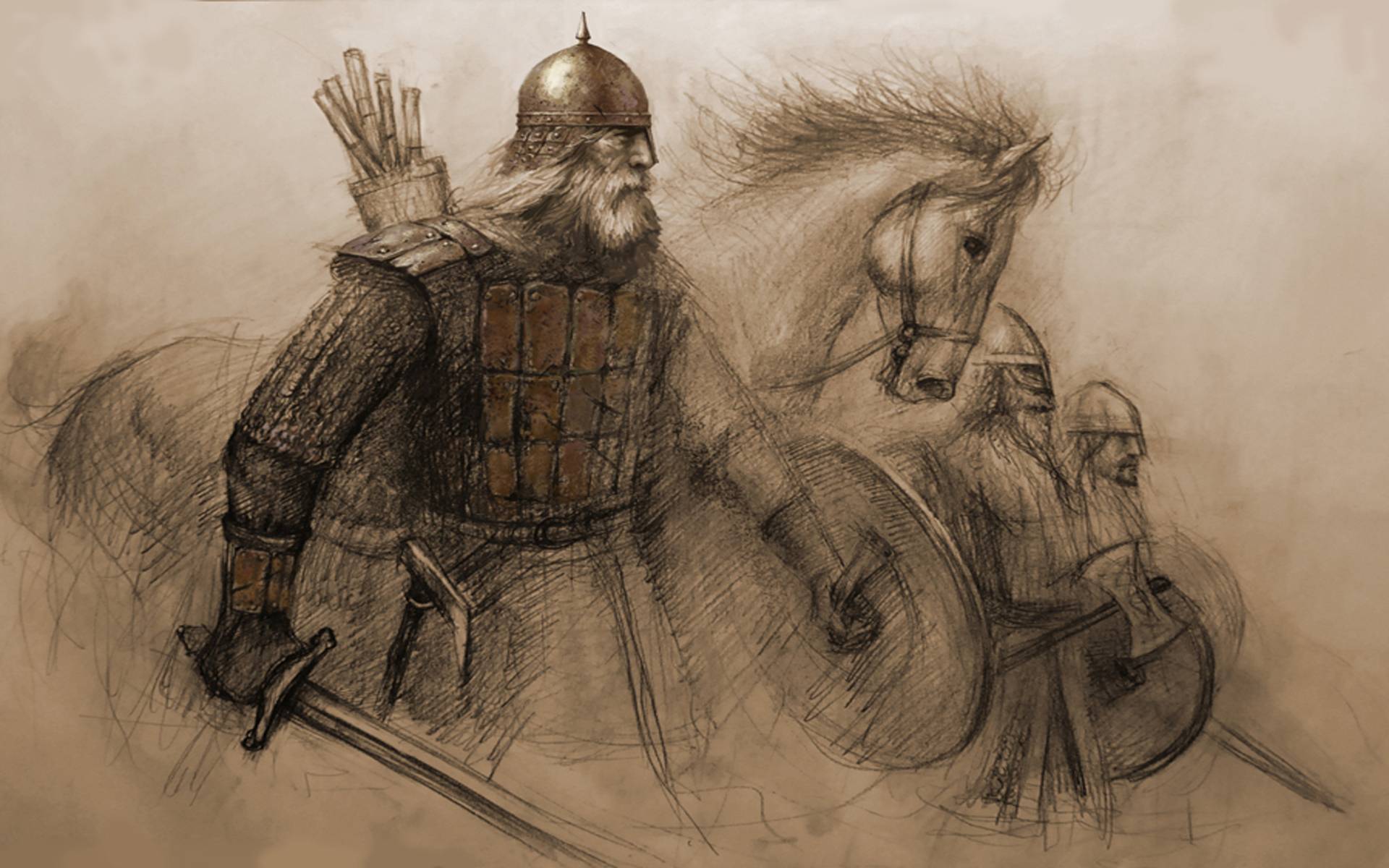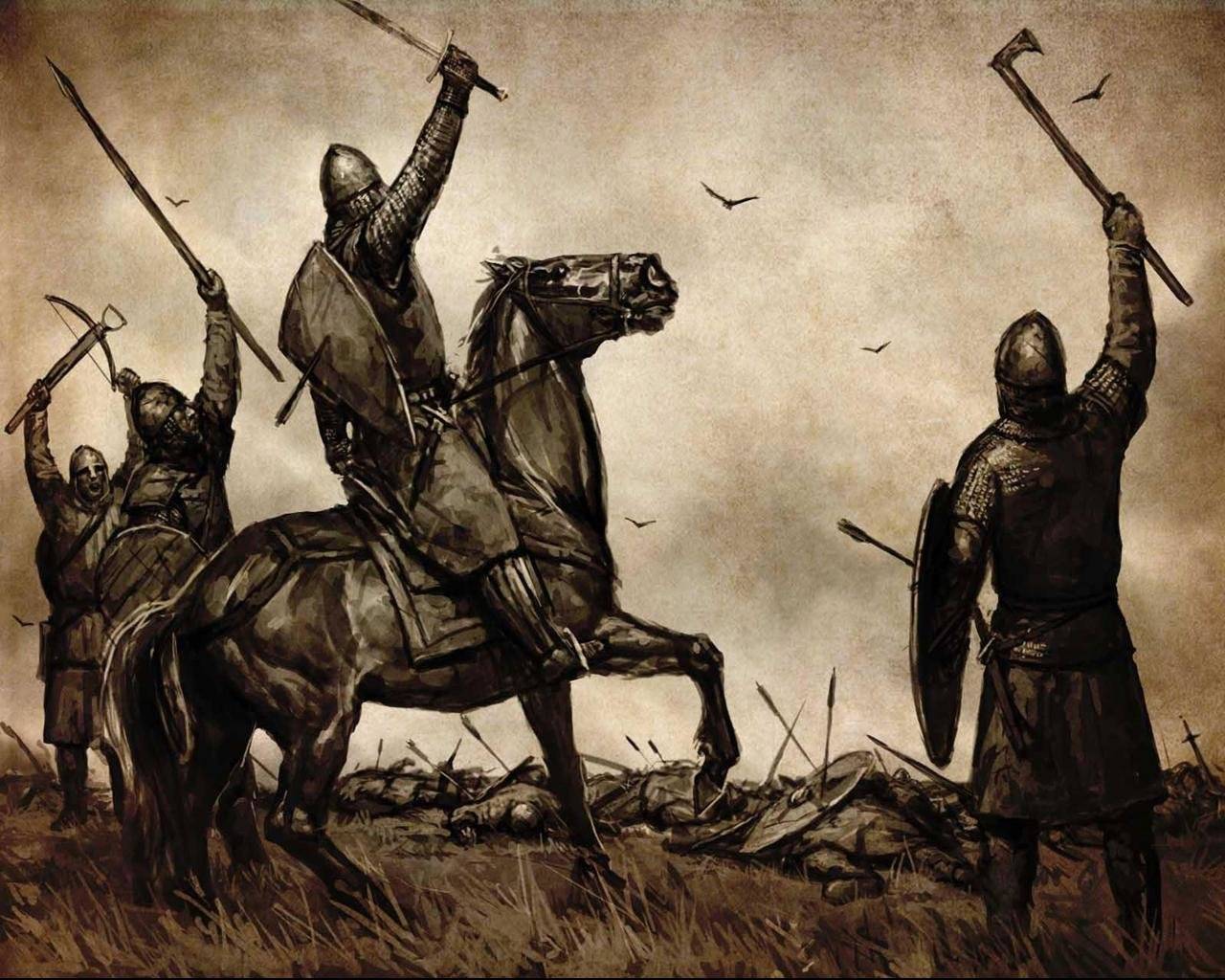“I can only note that the past is beautiful because one never realises an emotion at the time. It expands later, and thus we don’t have complete emotions about the present, only about the past.”
― Virginia Woolf
Internal and External Status Quo
The 70s of the X century is one of the most important stages in the history of Georgia, which throughout its long existence has always had the tendency towards unification, accompanied by the nonetheless weaker separatist soul. This cultural dissonance resulted in various attempts of knitting the kingdom together but almost always ended in an even stronger wave of disintegration.
Establishment of the first united Eastern Georgian state, the Kingdom of Kartli, which included a significant part of western Georgia, dates back to the time of King Farnavaz in IV BCE. Following this as the result of Roman-Persian wars, the state slowly disintegrated into several autonomous political entities over the next several centuries, until our beloved, but slightly overrated, King Vakhtang I Gorgasali unified the country again in the second half of V century A.D
In the VI-VIII centuries military dynamics between Byzantine, Iran and a bit later Arab caliphate and the struggle for the conquest of Georgia, as well as rising separatist powers inside the country, resulted in the formation of six main Georgian feudal states –Kingdom of Iberia, Kingdom of Tao, Kingdom of Abkhazia, Principality of Kartli, Emirate of Tbilisi and Bishopric of Kakheti– which lasted until the X century, until the creation of the Kingdom of Georgia.
In the X century, Byzantium facing the internal crisis had enough problems on its hands to pay attention to Georgian politics, nor was there a threat from the Khazars of northern Caucasus, as its days were numbered. Arab Caliphate was on the verge of economic collapse as the three-century long conquest took its toll. In short, the status quo for unification looks better than ever.
This geo-political opportunity wasn’t wasted on the mastermind of the Georgian unification, Ioane Marushisdze. But before we get into the story of the making of Georgia, with its betrayals, complex hereditary problems, wars between sons and fathers, assassinations and basically everything you would expect of medieval politics, let me introduce you do the characters of the play.
Characters:
Ioane Marushisdze
The mastermind behind this whole thing and the
prince of the Kartli region.
David III of Tao
Uncle of Bagrat III, the king of Tao and Kuropalates of
Byzantine Empire, which makes him the nominal
vassal of the empire.
Bagrat III
The first king of the unified Kingdom of Georgia.
Gurgen
Brother of David, father of Bagrat III and
heir of the kingdom of Iberia.
Bagrat the Plain
Father of Gurgen, Grandfather of Bagrat III from
father’s side and the king of Iberia.
Theodosius III
Grandfather of Bagrat III from mother’s side and
the blind King of Abkhazia.
Gurandukht
Daughter of Theodosius and mother of Bagrat III.
The Master Plan
The master plan of Georgian unification was developed by Ioane Marushisdze, the prince of Kartli (Inner Kartli), presumably appointed by the King of Abkhazia. He most likely had a team of supporters and like-minded people about whom historical sources remain silent.
He discovered a boy named Bagrat (later known as Bagrat III) son to the heir of Iberia from father’s side and heir to the Kingdom of Abkhazia from mother’s side. Aside from this, he was adopted as an heir by the greatest ruler of all Georgian states at the time, the sonless king of Tao and Kuropalates of Byzantine empire – David III of Tao. The boy was destined to inherit three of the biggest realms in the region sparkling the potential of a grandiose unification. But as history always is, the situation was loaded with problems. Not to mention hereditary complications and influence of outer powers, the unification of just three feudal states could not possibly constitute a unified Kingdom of Georgia. Ioane set out on a mission to unify the region, that meant that all principalities and kingdoms of the region, including his own, had to be brought under the common rule.
He was a smart enough man to know who held the biggest power in the region. That was the David of Tao, whom Ioane presented his ingenious plan.
Considering the personality of Davit of Tao, Ioane Marushisdze explained to him the situation in the Abkhazian kingdom under the disastrous rule of blind Theodosius, as well as illegitimate claims of the nobles of Kakheti on Kartli who had taken control of one of the strongest castles in the region. Thus he told him to attack the separatist nobles and either take Kartli for himself of hand it over to his adopted-heir Bargat, who was a potential heir to three major states in the region and with Kartli put under his legitimacy as well the goal would almost be complete.
The One With the Duke of Kartli
David lacked neither power nor wealth but either because of his own interests in the matter or inspired by the prospect of the united Georgian kingdom he agreed on the quest and shortly after he set out. As soon as the Kakhetian nobles learned about the advances of David they ran back to their estates leaving Kartli free. There and then Bagrat was made the Duke of Kartli by the local nobles, including the prince Ioane himself. But as he wasn’t of age yet, his father Gurgen was left as his regent. At the ceremony, David made an announcement which would determine the legitimacy of Bagrat’s rule over the whole of Georgia: “Thus is the ruler of Tao, Kartli, Iberia and Abkhazia and thy obey his will from hence.”
With this said, David basically outlined the heredity of Bagrat, saying that the whole Western and Central Georgia belonged to him after his death and that of Theodosius the king of Abkhazia. By satating this he made sure that there was no question of rivalry about the throne.
But, as I said, the history is never that simple. Ioane, Davit and other initiators and participants of this act were well aware of the great historical significance of this event. After the death of Theodosius, Bagrat would probably no longer have a rival to the throne of Western Georgia, and he would receive it painlessly, without complication, but it seems there were forces that did not think it was desirable to wait so long.
The One with the King of Abkhazia
The reign of the blind king Theodosius complicated the situation in western Georgia. In the words of the chronicler, “depravity got hold over the land, every law and tradition established by the first kings was disgraced and sorrow was the ruler of all”.
Ioane decided to take matters into his own hands and decided that it was about time to dethrone the blind king and bestow the honors upon everyone’s favorite kid Bagrat. He turned to David of Tao, as he always did, for political support, but David was hesitating. Although he knew from the beginning that Bagrat was to occupy the throne of western Georgia, he also knew this was planned after the death of Theodosius. It could’ve been because David of Tao considered the act of dethronement illegal and sinful. In the end, Ioane and his supporters got him to agree to the plan, which he did with great hesitation and not without serious precautions.
Before they could go on with their plan a terrible thing happened in Kartli, where Bagrat was made the duke and his father Gurgen the regent. Separatist nobles of the region, with the help of the chief of Kakheti, captured Bagrat, with Gurgen and Gurandukht. The situation was resolved thanks to David who immediately organized the army and set out to rescue them.
Shortly after the rescue mission, Ioane Marushisdze, aided by David, forced Theodosius of Abkhazia to abdicate the throne in favour of his nephew Bagrat. The latter left his mother, Gurandukht, to govern Kartli and proceeded to Kutaisi to be crowned King of the Abkhazians. The disorder was still rampant in the kingdom, but Bagrat’s descent from both Bagratid and Abkhazian dynasties made him an acceptable choice for the nobles of the realm who were growing weary of domestic quarrels. It’s worthy of noting that by the invitation of David Bagrat’s coronation was attended by Sumbat Bagratun, Armenian king of Shirak, which added additional legitimacy to his rule and demonstrated his power.
Bagrat took over the reins at the age of eighteen, two years after he was crowned the king of Abkhazians. It seems that throughout these two ears Theodosius was still in charge, presumably in order to soften the transition of the crown in the eyes of noblemen. He was smart enough to determine that he would never have absolute power as long as Theodosius remained in the kingdom because some noblemen and members of the court still remained loyal to him. For this very reason, the blind and surprisingly complacent king was sent to some safe place within the kingdom of David of Tao.
Bagrat proved an able ruler and succeeded in restoring law and order in his kingdom. While he was in Kutaisi, the aristocratic opposition of Kartli led by Kavtar Tbeli disregarded Gurandukht’s authority and ran their estates as semi-independent rulers. When Bagrat returned to Kartli to deal with this situation, the nobles offered him an armed resistance, but the king won the battle at Moghrisi and forced the rebels into submission.
The One with Betrayal
As we’ve already seen David of Tao played a crucial role in this whole endeavor. He also declared Bagrat his successor, but he was not the man to let some teenager interfere with the affairs of his kingdom. Unfortunately enough it seems even the nicest kittens sometimes shed blood from the hand that feeds them. There was one incident that had quite unpleasant consequences for Georgia.
Ioane Marushisdze’s plan aimed to bring western Georgia, Kartli, Iberia and Tao under Bagrat’s rule. David completely agreed with this plan, when in his speech he especially noted that Bagrati is “a native of Tao, Iberia, Kartli and Abkhazia.” He also quite logically presumed that Bagrat would take Abkhazia after the death of Theodosius and Tao after the death of himself. But it seems Ioane Marushisdze did not think so, nor did Bagrat, as we’ve already seen in the case of Abkhazia. Apparently, they planned to take Tao as well during David’s lifetime.
The chronicler tells us that Bagrat together with his father Gurgen set out with an army towards Kldekari in Lower Kartli, whose duke Rati continued to ignore the royal authority and ruled rather independently. Everything pointed towards Bagrat subjugating just another rebellious nobleman and quite a powerful one at that too. But David heard another thing.
He was told that Bagrat was set out to kill him and take his kingdom for himself. Naturally, he raised the army and called upon his allies for help. Amongst them was his own brother and grandfather of Bagrat – Bagrat the Plain, king of Iberia, who feared that his son Gurgen might renounce him. So, again, not to get confused here – Bagrat the Plain is the grandfather of Bagrat the teenager king of Abkhazia.
Being a badass king that David was he launched a surprise attack on Bagrat’s forces led by Gurgen and defeated them. The Georgian chronicler wants to make us believe that Bagrat didn’t have anything evil in his heart and that he was truly going for Rati, but understanding history is all about reading between the lines. After the devastating defeat, Bagrat sent spies to David’s camp in order to evaluate his forces. We will, later on, see that foreign powers were also at play here, but to concentrate on inner affairs first – Bagrat’s wish to take Tao under his rule was perfectly reasonable, but it wasn’t timely. The Armenian historian Stephanos explicitly tells us that it was David’s and Bagrat’s armies that stood on the battlefield against each other. Another reason for Bagrat to attack David was because at that time Bagrat the Plain (Bagrat’s grandfather) under the impression that his son Gurgen (Bagrat’s father) wanted to overthrow him was taking away his land and titles.
Anyway, as soon as Bagrat received the news that he had absolutely no chance against David and not a minute sooner he went to David on his knees alone and tried to persuade him that he did not intend to overthrow his rule.
It’s hard to say whether David believed him or not, but what we can be sure is that he didn’t let Bagrat go unpunished – he was forced to forfeit some of his best castles to David and his Armenian ally, king Sumbat Bagratun. Giving castles to his Armenian neighbors was not at all profitable for Bagrat but he complies, which should also tell us that he wasn’t really all that innocent.
The One in Which David Messes Up
Shortly after the unfortunate incident Bagrat the Plain died and David being his brother, inherited the lands. Through his expansionist policy and flexible diplomacy began assembling a larger state. In order to enact his ambitious plans, being kouropalates of the Byzantine empire and therefore its formal vassal, David had to secure his absolute independence from it and he very well knew that the emperor Basil II wouldn’t just grant him that wish.
Fortunately, the integrity of the empire itself was under serious threat after a full-scale rebellion, led by Bardas Skleros, broke out a few years later. Following a series of successful battles the rebels swept across Asia Minor and threatened Constantinople itself. The emperor called upon David of Tao for help, who pledged 12 000 Georgian horsemen to the campaign. Although they managed to defeat the rebels David didn’t get the reward he was hoping for.
Now, the empire was facing just another full-scale rebellion led by Bardas Phokas and David wasn’t going to make the same mistake by siding with the emperor again. Anxious to make his extensive possessions a hereditary Bagratid domain, he joined a long-time friend Bardas Phokas in a rebellion against the emperor Basil.
Before we go on it’s worth stepping back for a moment to clear one very important thing up – do you remember how Bagrat the teenager king was presumably marching to punish his insubordinate vassal Rati, but in reality (most likely) planned to overthrow David? Well, it happened almost simultaneously with David joining the rebellious forces against the emperor. This makes us think that it might have been the emperor Basil II himself who prompted Bagrat to attack David.
Anyway, let’s continue with the rebellion. Not to bore you with details of it, we can just say that Basil II together with his Rus allies was victorious, which meant that David was in serious trouble now.
Basil dispatched a strong force to punish the Georgians, and David had to submit. Reconciled with the emperor, he was granted the title of kouropalates again in return for his promise that upon his death the lands of Thither Tao would be handed to the Byzantine Empire.
This meant David could no longer pass his kingdom to Bagrat now, thus breaking his word and putting the whole unification thing under threat.
The One in Which David Dies
Although David once again swore loyalty to Basil, it seems the emperor still didn’t trust him enough to leave him to reign in peace. He was quite right in that because the lion king of Tao never stopped fighting (although not quite directly) for independence. A few years later David of Tao was poisoned by his own nobles, presumably by orders of Basil and the lands of Thither Tao were swallowed by the vast Byzantine empire.
Iberia and Hither Tao was Gurgen’s by right and inherit it he did, becoming the king of Iberians. Bagrat still only had the title of the king of Abkhazia and Kartli, which wasn’t enough for unification. Hoping to regain the lands of Thither Tao from Basil, Bagrat and Gurgen met with him but were unable to change the emperor’s mind. Instead, Basil bestowed Bagrat with the Byzantine title of kouropalates, and Gurgen with that of magistros, actually the competing titles since the dignity conferred upon the son was more esteemed than that granted to the father. This was done by the emperor, as the Georgian chronicles relate, to turn Gurgen against Bagrat, but he seriously miscalculated: “as Gurgen was honest and veracious, and Basil could not incite the envy in his heart and did not succumb to Basil’s ploy.”
Later the same year, as soon as Basil left Georgia, Gurgen attempted to take David Kuropalates’ succession by force, but he had to retreat in the face of the Byzantine army. Lands of Thither Tao were officially lost and there was no reclaiming them now, but at least Hither Tao was safe in the hands of Gurgen.
The One with Aggressive Unification
A few years later Gurgen died and Bagrat succeeded him as King of Kings of the Georgians, becoming thus the first king of a unified realm of Abkhazia, Iberia and Khartli what was basically whole central and Western Georgia.
After he had secured his patrimony, Bagrat proceeded to press a claim to the easternmost Georgian state, Bishopric of Kakheti and annexed it after two years of fighting and aggressive diplomacy. Thus becoming the King of Kartli, Abkhazia, Iberia and Kakheti (in this very chronological order) ruling over the land what was to be henceforth known as Sakartvelo – “all-Georgia”.
Bagrat’s foreign policy was generally peaceful and the king successfully manoeuvred to avoid the conflicts with both the Byzantine and Muslim neighbours even though Thither Tao remained in the Byzantine and Tbilisi in the Arab hands. His reign was a period of uttermost importance in the history of Georgia. Soon, by poisoning his cousins, Bagrat brought about the final victory of the Georgian Bagratids that lasted for centuries.
This was the making of Georgia and thus the beginning of the new era in its history.










